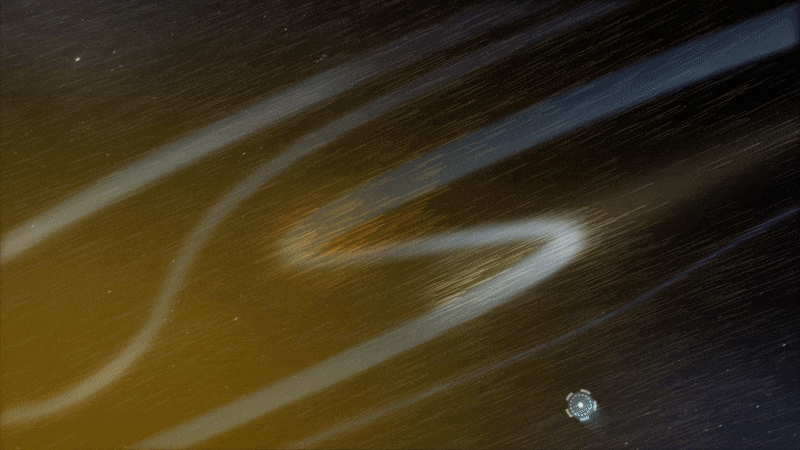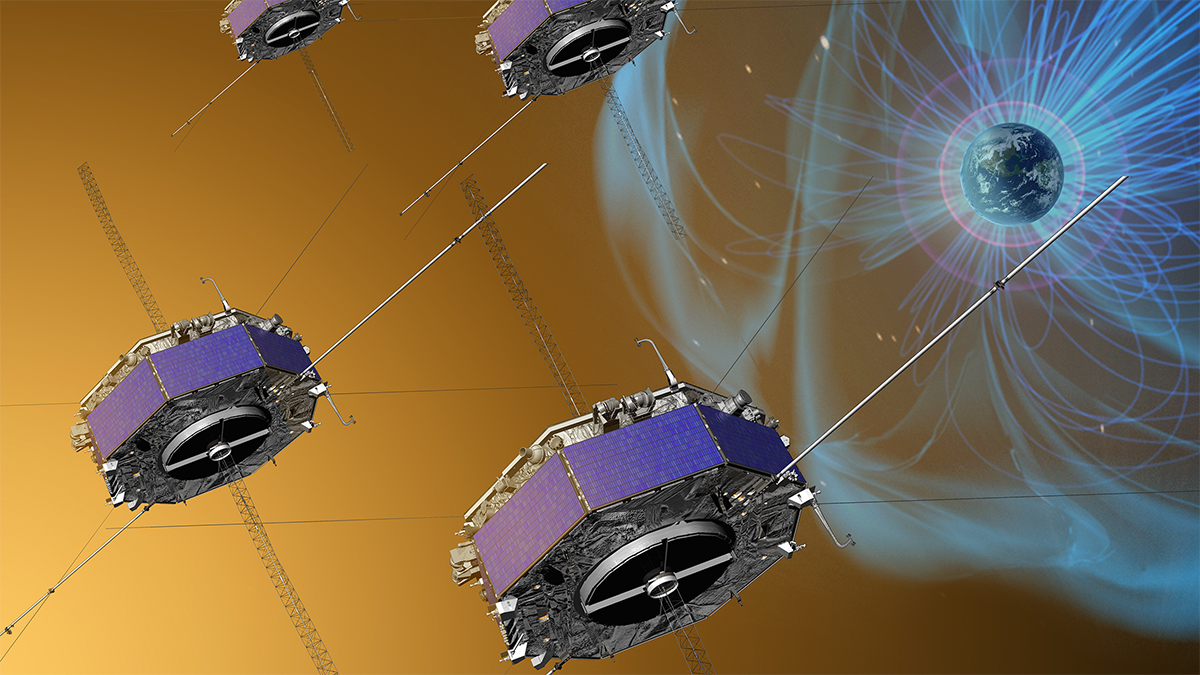Source: Journal of Geophysical Research: Space Physics
In recent years, NASA’s Parker Solar Probe has given us a close-up look at the Sun. Among the probe’s revelations was the presence of numerous kinks, or “switchbacks,” in magnetic field lines in the Sun’s outer atmosphere. These switchbacks are thought to form when solar magnetic field lines that point in opposite directions break and then snap together, or “reconnect,” in a new arrangement, leaving telltale zigzag kinks in the reconfigured lines.
McDougall and Argall now report observations of a switchback-shaped structure in Earth’s magnetic field, suggesting that switchbacks can also form near planets.
The researchers discovered the switchback while analyzing data from NASA’s Magnetospheric Multiscale mission, which uses four Earth-orbiting satellites to study Earth’s magnetic field. They detected a twisting disturbance in the outer part of Earth’s magnetosphere—the bubble of space surrounding our planet where a cocktail of charged particles known as plasma is pushed and pulled along Earth’s magnetic field lines.
Closer analysis of the disturbance revealed that it consisted of plasma both from inside Earth’s magnetic field and from the Sun. The Sun constantly emits plasma, known as the solar wind, at supersonic speeds in all directions. Most of the solar wind headed toward Earth deflects around our magnetosphere, but a small amount penetrates and mixes with the plasma already within the magnetosphere.

The researchers observed that the mixed-plasma structure briefly rotated and then rebounded back to its initial orientation, leaving a zigzag shape that closely resembled the switchbacks seen near the Sun. They concluded that this switchback most likely formed when magnetic field lines carried by the solar wind underwent magnetic reconnection with part of Earth’s magnetic field.
The findings suggest that switchbacks can occur not only close to the Sun, but also where the solar wind collides with a planetary magnetic field. This could have key implications for space weather, as the mixing of solar wind plasma with plasma already present in Earth’s magnetosphere can trigger potentially harmful geomagnetic storms and aurorae.
The study also raises the possibility of getting to know switchbacks better by studying them close to home, without sending probes into the Sun’s corona. (Journal of Geophysical Research: Space Physics, https://doi.org/10.1029/2025JA034180, 2025)
—Sarah Stanley, Science Writer


